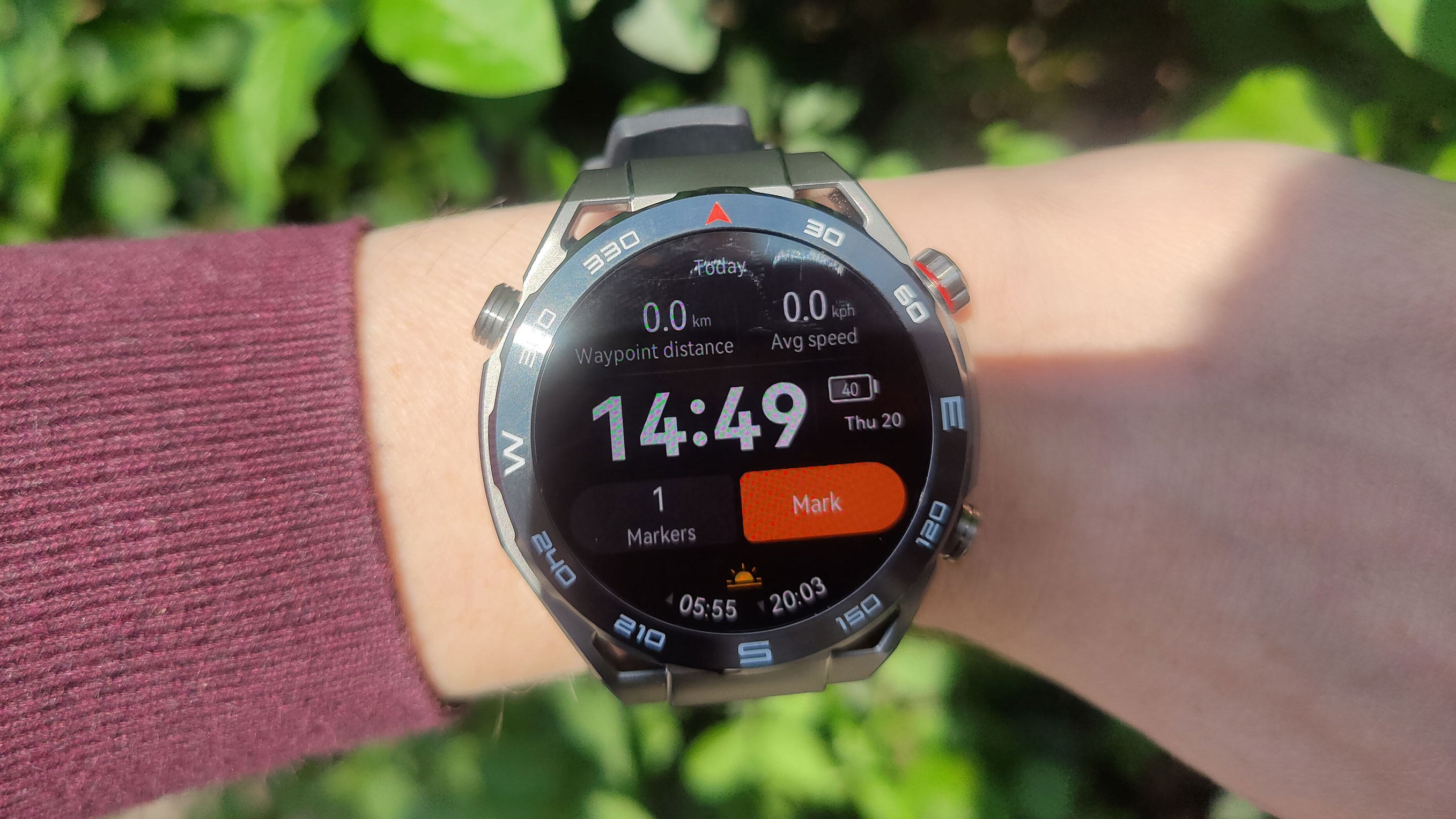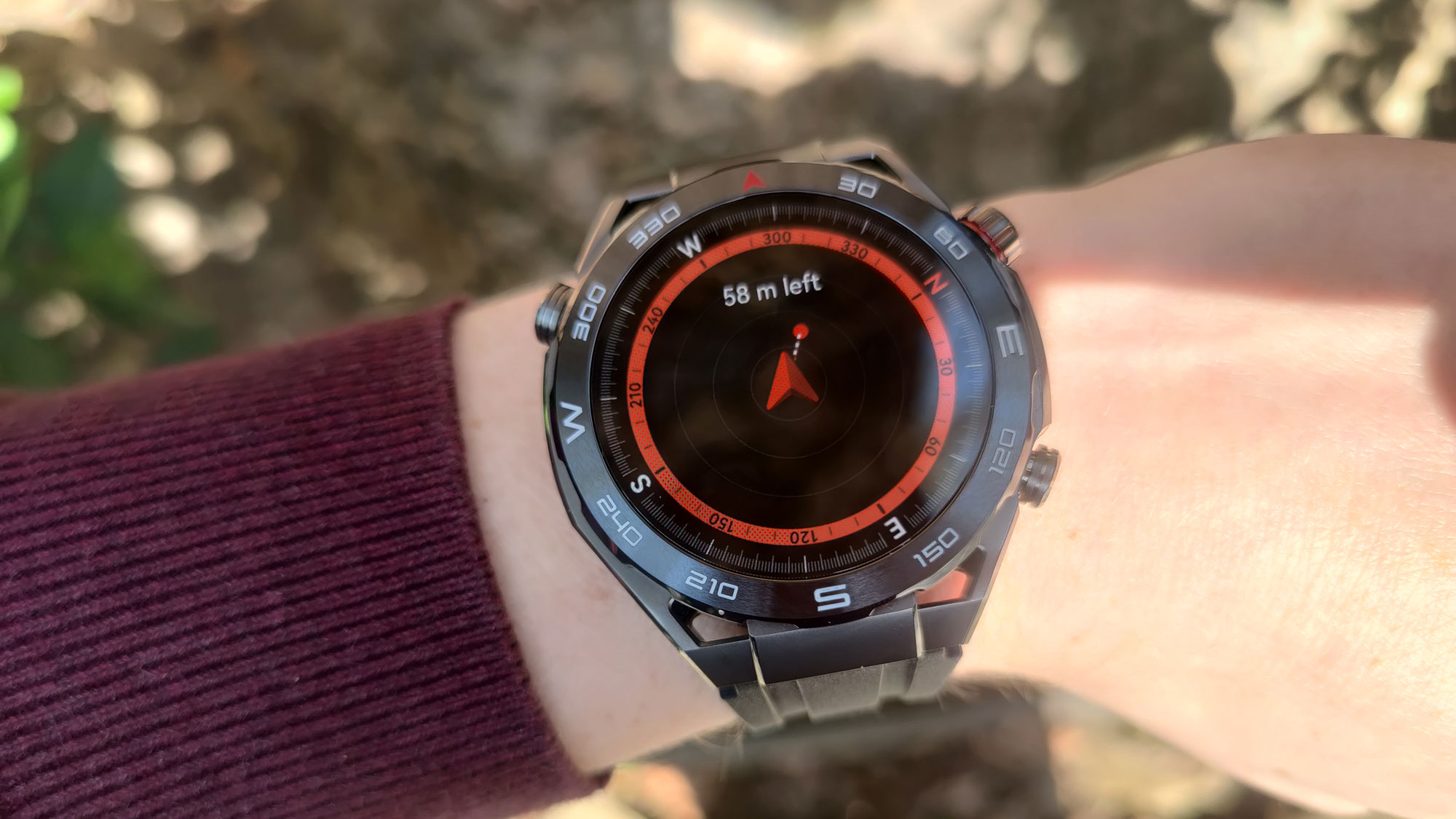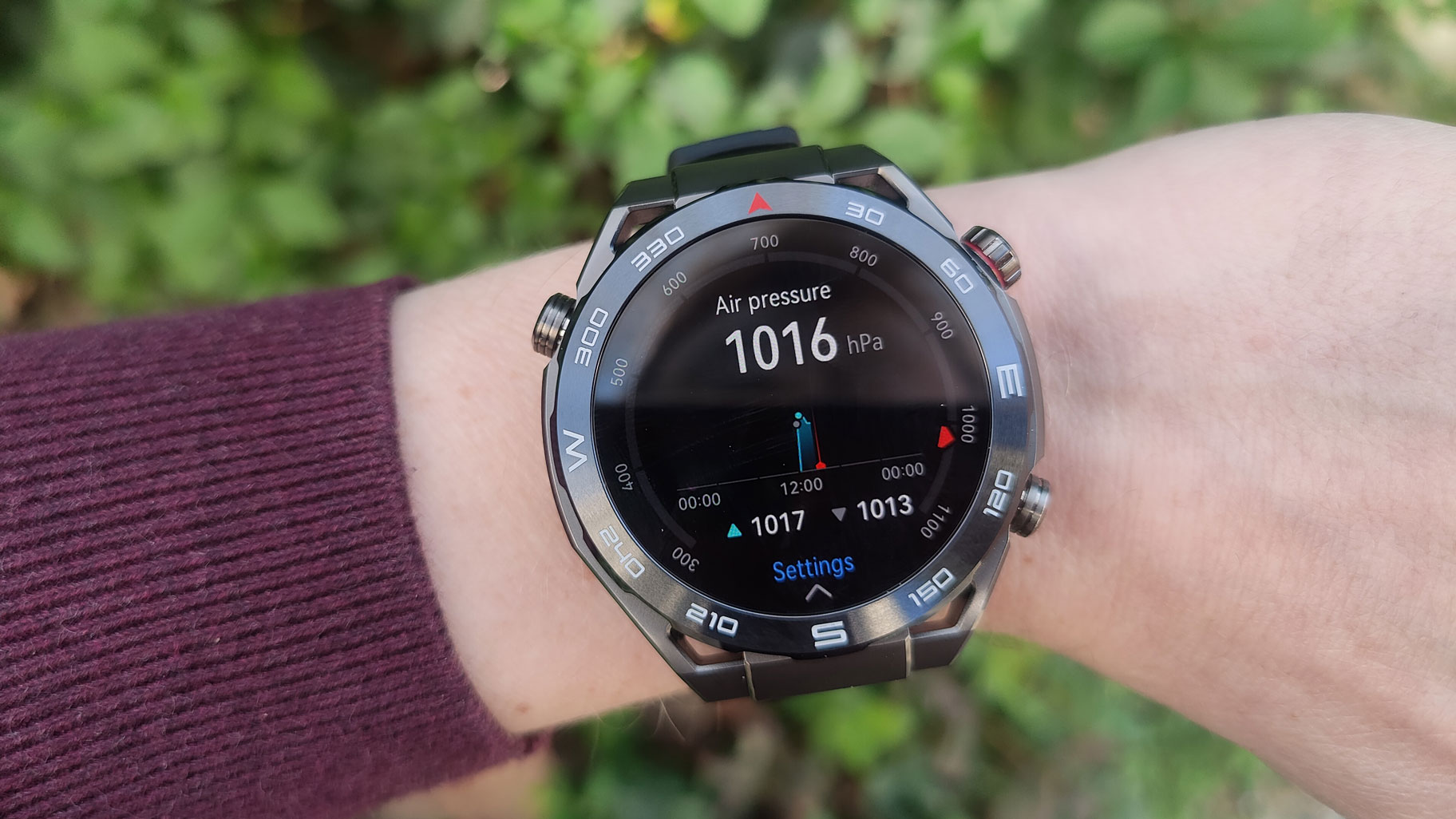
I’ve been testing the Huawei Watch Ultimate for a couple of weeks now, draining the battery and testing its capabilities. It’s positioning itself as a rival to the Apple Watch Ultra and Garmin Fenix 7, aiming squarely at the best running watch crown.
One feature that I’ve been particularly impressed with is its Expedition Mode, an all-purpose mode for hiking, trails, orienteering, and other outdoor pursuits.
Along with the Huawei Watch Ultimate’s Dive Mode, which turns the watch into a working dive computer capable of plumbing depths of up to 100m, the Expedition Mode is one of the Ultimate’s key selling points. It can be accessed with a press of the Watch’s unique new ‘Ultimate button’.
Once you press that and start an expedition, the mode is comprised of four screens. Your home screen shows you the following:
- The time
- Your average speed
- The ability to mark your current position as a GPS waypoint
- The distance to your closest waypoint
- The number of waypoints you’ve marked on your journey
- The time until sundown/sunrise.

Scrolling down, the second screen shows how long you’ve travelled, your current heart rate, and the current altitude at your position. The third screen is a compass with exact degree readouts, while the fourth screen acts as a home for several key apps: an SpO2 sensor to check your blood oxygen level (essential at high altitudes), a barometer to measure air pressure, and a button to turn the screen into an LED torch.
You can change the color and brightness of the torch, and you can also use Night Mode to drop the whole Expedition Mode readout from a bright white to a dim-orange glow, to stop you using your night vision.
On my initial testing, using it to track back to the waypoints I set for myself, I was impressed with its ease of use. Initially, I queried why you wouldn’t opt for full-color maps the way the best Garmin watches do with GPX files, especially on such a beautiful AMOLED screen.
However, my fears were unfounded: once you hit a waypoint and swipe over to the compass screen, the compass tells you not only how far you are away from the waypoint and whether you’re headed in the right direction, but it’ll even serve you onscreen prompts, telling you to turn left or right.

I’ve used similar prompts before: it reminds me of Garmin’s TracBack or Polar’s Back to Start features, which allow you to retrace your route the way you came. Huawei's version is way more adaptable, though. For example, if you use Back to Start on a Polar watch, it will assume you’re trying to directly retrace your steps and offer you a route home matching the way you came.
In contrast, as long as you remember to drop regular waypoints in Huawei’s Expedition mode, you’re free to explore as much as possible - while never really losing your bearings. You also don’t have to keep walking around staring at your watch like you'd have to do if you were following a route or using a GPX file. A few quick glances at Expedition Mode offer exactly enough information to understand where you are in relation to the last waypoint you dropped.

Plus, it saves your night vision, so you can navigate back to your camp much more effectively. And, thanks to Huawei Watch Ultimate’s battery life (which is pretty impressive, and lives up to its claims) its torch functionality is usable for an extended period. Plus, it can flash and project up to 1000 nits of brightness - although I'd probably rely on it more for signaling than for forging my way through dark undergrowth for hours.
I’m writing a full review of the Huawei Ultimate Watch next week, but I was so impressed with the elegance and lack of complexity of the Expedition Mode that I wanted to call it out directly.
The Apple Watch Ultra, for all its brilliance, doesn’t collate all this information in a single place, a hub for outdoor adventures like this new hiking mode. Take note, Apple: although the watch itself is unlikely to muscle its way past the Ultra on our best smartwatch list, the Ultimate’s Expedition Mode is a thing of beauty every hiker should consider.







